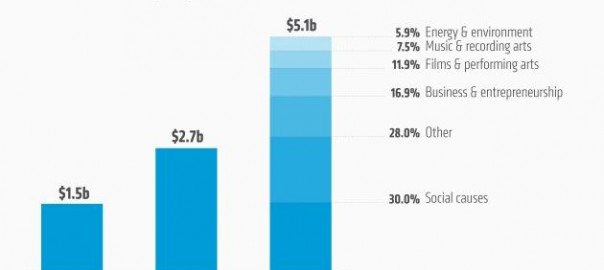
According to the Social Times of Adweek, eCommerce in itself has become a $ 220 billion dollar industry. Now, we are in the fourth quarter of 2015 and all signs point to continued growth in eCommerce. Many professionals see the industry continuing to grow rapidly through 2018 and beyond.
After working as an advisor for a startup company focusing on apparel I came to the realization that too few entrepreneurs know what it takes to start running an eCommerce website.
To make sure ecommerce entrepreneurs are launching their business on the right foot, and continue to run their ecommerce website on the right foot, here are the “four corners” to a thriving business with an ecommerce website. Ready to dig in?
1. Understand the Market: The People and the Geographic Area
Let’s start with an example. Dollar Shave Club is a huge success because they understand the challenge (and our laziness) of their potential customers. They developed the process of a simple ordering process (which can be completed in a matter of minutes) and priced their products more effectively (much more effective to say the least) than their competitors. Business is thriving and customers couldn’t be happier. Dollar Shave Club understood not only their geographic market, but also their product market.
Now, it’s your turn to follow their footsteps. The founding team did not just jump in blindly, and you shouldn’t either. You’ve probably done your homework for months and you are 120% sure that you will achieve success in that industry.
But here’s the thing. Have you really taken the time to understand the market itself? One of the major discussion points in marketing during the early stages of a new business is SWOT analysis. If you’re not familiar with SWOT analysis, then take a look:

In short, strengths and weaknesses is an analysis on your own business in which the “strengths” are characteristics that are helpful and “weaknesses” are hurting you. “Opportunities” and “threats” are exterior to your company and as such is an analysis of your competitors and the market itself.
An integral part of the “O” and the “T” is knowing what your competitors are well-versed in. If you don’t know, then you’ll be be competing with them blindly. Do you know what they do well or what they do poorly? Any chance at long-term success depends on finding areas to help your business stand out from the competitors.
Understanding your market is two-fold: product and geographical market.
Product Market:
- Who is buying this product?
- How often are they buying it?
- What is the low and high amount being spent on it?
- Is there an increase or a decrease in the amount being spent on a yearly basis?
- What variations in the product are people looking for (Google Trends)?
- Are there any big players in the market?
Geographical Market:
- Is eCommerce spending rising?
- What are people in your market purchasing?
- Is in store spending rising?
- How are people buying online (mobile, desktop, etc)?
If you don’t know what they are well-versed in, you would be competing with them blindly. Do you know what they do well or what they do poorly? Any chance at long-term success depends on finding areas to help your business stand out from the competitors.
In many cases, there are business owners that do not perform sufficient analysis on the market prior to creating a marketing strategy. The result could possibly be a massive waste of marketing funds, failing to convert leads into sales, and wasting your most precious asset – time.
Takeaway: Understanding your market goes beyond your customers. It involves understanding your potential competitors and their marketing strategies. Sufficient analysis and a strong grasp of the market will ensure a higher chance of the eCommerce success.
2. Capital Matters: It Costs Money to Make Money
If you are planning to start an eCommerce business, you would probably understand that having sufficient capital is more than just vital.
Having sufficient capital and running funds are important to ensure the livelihood of your business. More importantly, you must understand that the first six to twelve months will probably the hardest time for you.
Most entrepreneurs do prepare funds for this matter but the biggest question is, “how much money is sufficient?”. I know many marketers that don’t keep a healthy balance sheet for more than six months and this means that after six months, they are sometime scrambling to enable their business to survive!
In today’s competitive online shopping realm, planning six months of funds is definitely not enough. eCommerce is constantly growing and evolving, and your budget has to take that into account.
What can you do if you are low on capital?
There are several eCommerce businesses that you can get into that require less capital, such as dropshipping, subscription boxes, and intermediary businesses (properties or real estate brokers). Here too, you need to create a budget and put capital aside, however the financial risk is minimized quite a bit.
What other options do you have to fund your eCommerce website? Don’t forget crowdfunding. This is another topic in itself, but it is a strategy that can do wonders for the amount of capital your business has. The Undress (a StoreYa user) is a great example of an eCommerce success story in crowdfunding, as they were able to raise over $ 600,000! As you can see, crowdfunding is just getting started.

When starting an eCommerce website (and while running it!) you have to keep in mind that all of the following cost money and need to be taken into account when creating your budget.
- website hosting
- website security
- marketing tools
- advertising
- website design
- manufacturing
- employees/outsourcing work
Takeaway: You don’t need one million dollars to create a thriving and profitable business. However, that doesn’t mean you don’t need any money. Lack of capital has and continues to be one of the leading reasons for business failures!
Here’s a pro tip: either add 50% more to your budget to take you to your breakeven point or consider adding another half-year’s worth of costs to your original budget. Our tendency is to under budget. Don’t fall for that.
3.Picking the Right Platform: Which is Right for You?
You can’t really start an eCommerce website until you decide on which platform you’ll be building it on. You’ve got open-source platforms such as Magento, Prestashop, and WooCommerce and on the other end of the spectrum there are hosted platforms such as Shopify and Bigcommerce.
Which one is right for you?
Hosted platforms
With hosted platforms, you are able to upload a site, without any or very little coding knowledge, within just a handful of hours. Creating a site with either Shopify or Bigcommerce is very user-friendly, and as hosted solutions, they remove the large majority of the technical work that goes into building a site. On the one hand this means less flexibility with what you can do with your site, but on the other hand this ensures that you save capital when building your site.
Speaking of saving capital, not only can you save funds by saving on a development team, but you also save funds when using a hosted platform, because the cost of hosting is dispersed across thousands of different other merchants.
Open-source platforms
With an open-source platform, such as Magento, WooCommerce, Prestashop, and others you have much more freedom when building your site, from your site’s layout to the checkout process. It’s important to note that not only can you customize more aspects but you can also edit the functionality of the website when using an open-source platform
Another advantage to using an open-source platform is the independence from the implementation company, which enables entrepreneurs to turn the website into almost anything without limitation.
Take note that with open-source platforms, because the hosting is exterior to the platform, you are not limited with the number of products or categories that you can offer on your site. If you are adding hundreds of products, open-source might be the better choice.
Marketplaces
Heard of small companies like Amazon or eBay? Kidding aside, one of the more viable options for an online seller is selling on an existing marketplace that already has millions of monthly visitors. The marketplace – whether Amazon, eBay, or Etsy – all want you to makes sales. Of course with these options, you can focus on your product and forget any coding or technical tasks.
On the downside, you can find yourself getting lost between the thousands of other merchants selling similar products. Another big disadvantage is the lack of customer acquisition. The marketplace itself does this on their own end. If your profit margin is small on your products than marketplaces can make them even smaller, as they take a cut from each sale.
Takeaway: You might be hearing more about one platform because that’s what trending, but that does not necessarily make it the right one for you. You need to look at your budget, capabilities, and take your long-term vision into account before you make the decision to pick any one of these options. Don’t start an eCommerce website on your left foot.
4. Social Media Marketing: Make or Break Your Business
Over a billion users login to Facebook on a daily basis. Instagram has over 400 million active users per month and Twitter is not far behind with around 340 million users.
Let’s face it. Social media is a lifeline for any business, especially eCommerce. But, you probably knew that! Before we go deeper into the topic, the below are some statistics on the effects of social media in eCommerce:
- The average order value is highest on Polyvore, Instagram, Pinterest, and Facebook (Shopify)
- Facebook dominates as a source of social traffic and sales. Nearly two thirds of all social media visits to Shopify stores come from Facebook. Plus, an average of 85% of all orders from social media come from Facebook. (Shopify)
- 20% of all purchases are made via Facebook (via StoreYa’s own study)
- Half a dozen media-driven purchasing happens within one week of sharing, tweeting, linking or favoriting the product. (Adweek)
Here’s the biggest challenge: How will you leverage social media for your eCommerce business?
Tip #1: Focus on a specific platform
There are dozens of social media platforms out there and you probably can’t focus on every one of them. But what you can do is to focus on specific social media platforms (if you are a solopreneur, you probably have your plate full when you are managing three different platforms at the same time).
You don’t have to be on every platform. You need to be on the platform that enables you to best interact with your target customer.
Tip #2: Use social media tools
Social media tools can save you a lot of time. Tools like Hootsuite and Buffer can ensure that your social accounts are constantly active and you are publishing updates at the right time. Other tools, such as IFTTT and Zapier, enable you to automate multiple tasks automatically based on actions and triggers.
Going onto each network and interacting with other socialites is a must, but first of all you have to make sure to get your content out to the masses. There are a plethora of tools, each with their own benefits. Find the tools that make you more productive and that actually lead to results.
Tip #3: Have a plan
Too many ecommerce entrepreneurs think that they don’t need to worry about their social media marketing when starting an eCommere website. Instead, many simply think they can buy likes and just share their products in status updates.
Part of having a plan is knowing what tools and platforms you’ll be using. Having a plan also includes knowing what message you want to portray (branding) and how you’ll do that. Don’t start creating a plan one month in. Do it before you start your ecommerce website.
Takeaway: Social media can be a powerful lifeline for any eCommerce entrepreneur – no matter whether the person is a beginner or a big shot. Social media success comes off of first of all knowing your market, and then having a plan, tools, and making use of the right platforms.
If you haven’t grasped the importance of social media yet, then this should put things into perspective.
Over to You
For me, entrepreneurship starts before the business actually kicks off. As the eCommerce industry grows it will become more competitive, and thus you must try your best to avoid all of the “basic” mistakes that could derail your business opportunities.
Is there more that goes into running an eCommerce business? Of course…the entire StoreYa blog is dedicated to providing information to consistently improve your business and increase sales :). Are these four pointers something you took into account before and during your business’ life? What other basic tips need to be taken into account? Reginald and the StoreYa team look forward to hearing your thoughts :).
Digital & Social Articles on Business 2 Community(115)







